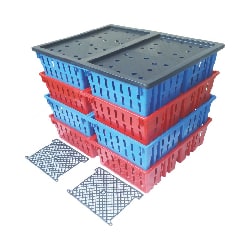Egg Storage Solution & Transportation Cage

Eggs Transport Cage / Crate
| Dimensions | 670L*363W*#350H mm |
| Capacity | 360 Eggs / 12 Trays |
| Weight | 2.50 Kg |
| Shipping Capacity | 700crate/25000Trays/20ft cntnr |
Egg transportation cages play a critical role in the poultry industry, especially in larger operations where the safe and efficient movement of eggs is crucial from the laying areas to processing, packing stations, or directly to market. These specialized cages are designed to handle a significant volume of eggs, ensuring they are transported without damage and with minimal handling.
Key Features of Egg Transportation Cages

Create With Tray Egg Filled

Stack Crate

Inserted Crate
Uses of Egg Transportation Cages in Poultry Farms
Benefits of Using Egg Transportation Cages
Best Practices for Using Egg Transportation Cages
Using egg transportation cages is a smart investment for any poultry operation focused on minimizing loss and maximizing efficiency in the egg production process. They not only improve operational logistics but also contribute to maintaining the quality and safety of the eggs from the farm to the table.
Related Products :

BeakMaster Debeaker Machine (Manual) With Fan











